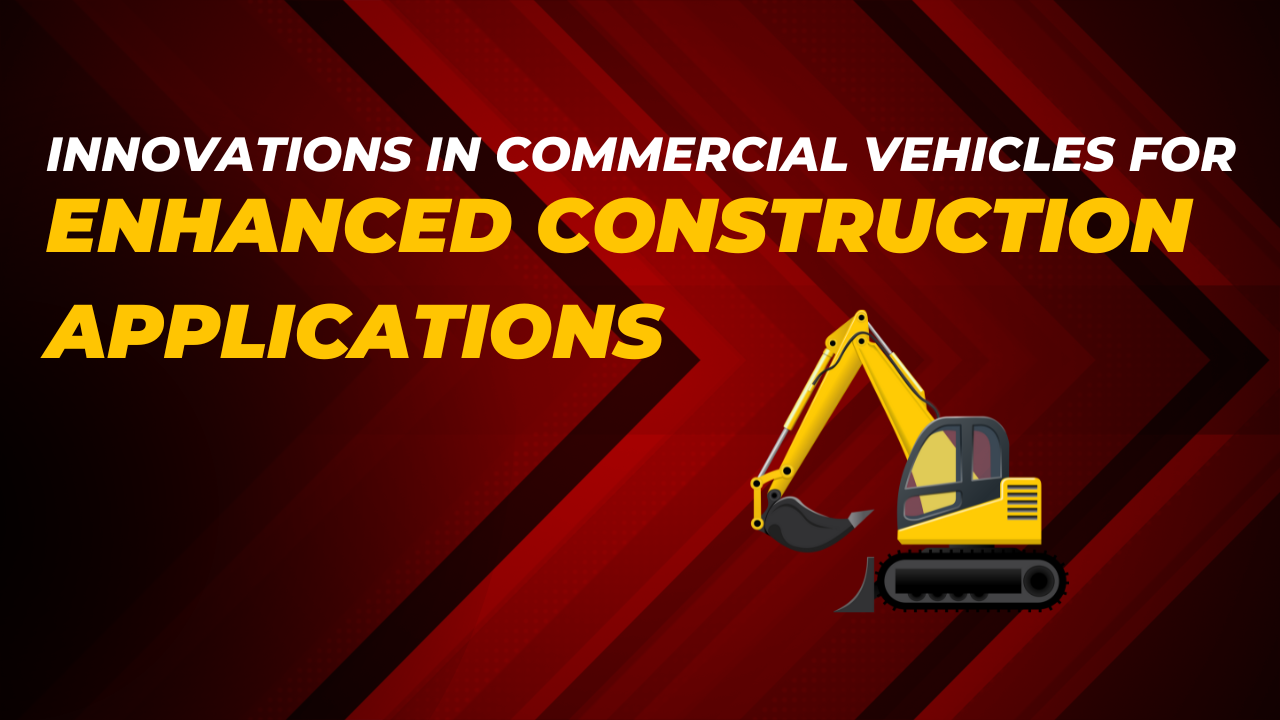
Infrastructure development and economic growth depend on the construction industry, which is the backbone of it. Commercial vehicles provide support and advance construction applications by transporting materials, equipment, and personnel to and from job sites.
Innovations in commercial vehicles have significantly enhanced their capabilities, efficiency, and safety, contributing to more productive and sustainable construction practices. Let’s explore the multifaceted creations in commercial vehicles tailored for construction applications.
Revolutionising Construction Applications with Innovation
Innovations in commercial vehicles tailored for construction applications have transformed the industry, promoting efficiency, sustainability, safety, and driver comfort. Moreover, the Advancements in technology, including telematics, connectivity, and automation, have revolutionised fleet management and communication.
Furthermore, the tata intra v10 makes it ideal for profitable construction applications. Let’s have a comprehensive look at advancements and innovations that are enhancing construction applications.
Technological Advancements:
- Telematics and GPS: Advanced telematics systems integrated with GPS have revolutionised construction vehicle management. Fleet managers can monitor vehicle location, performance, and maintenance needs in real-time, optimising routes and schedules for improved efficiency.
- Connectivity: Internet connectivity in construction vehicles facilitates seamless communication between job sites and offices. Moreover, it ensures immediate access to project data, enhancing decision-making and project management.
- Automated Transmission: Automated manual transmissions and fully automatic transmissions have made driving construction vehicles more comfortable and fuel-efficient. These innovations simplify gear shifting and reduce driver fatigue.
- Advanced Driver Assistance Systems: ADAS features like lane-keeping assistance, adaptive cruise control, and collision avoidance systems enhance safety on construction sites and highways.
- Electric and Hybrid Powertrains: Electric and hybrid commercial vehicles are becoming more prevalent, reducing carbon emissions and operational costs. They are particularly beneficial for construction projects in urban areas with strict emissions regulations.
Environmental Sustainability:
- Electric Commercial Vehicles: Battery-electric commercial vehicles offer zero-emissions activity, lessening the carbon impression of development projects. They are particularly reasonable for undertakings in metropolitan regions vulnerable to air quality.
- Hydrogen Fuel Cells: Hydrogen fuel cell innovation is emerging as a manageable choice for hard-core commercial vehicles. It offers long-range capacities and quick refuelling, making it reasonable for expanded development projects.
- Lightweight Materials: Using lightweight materials in commercial vehicle construction reduces fuel consumption and greenhouse gas emissions. Aluminium and composite materials are increasingly integrated into vehicle design. However, pickups such as Tata Intra V50 are utilised for the transportation of these lightweight materials.
- Idle Management Systems: Idle reduction technologies in commercial vehicles help minimise unnecessary engine idling, conserving fuel and reducing emissions during downtime on construction sites.
Safety Measures:
- Enhanced Visibility: Innovations such as 360-degree cameras, blind-spot monitoring, and improved mirror systems enhance driver visibility, reducing accidents in crowded construction zones.
- Collision Mitigation Systems: Advanced collision mitigation systems, including automatic emergency braking and adaptive cruise control, help prevent accidents and protect drivers and pedestrians.
- Roll-Over Protection: Vehicles with enhanced stability control systems and roll-over protection structures improve safety on uneven terrain.
- Work Zone Safety Technologies: Commercial vehicles have features like dynamic speed limiters, lane-keeping assistance, and warnings to enhance safety within construction work zones.
- Driver Monitoring Systems: These systems assess driver fatigue and distraction, alerting operators to potential safety risks.
Ergonomic Designs:
- Comfortable Cabins: Modern commercial vehicle cabins prioritise driver comfort with ergonomic seating, adjustable steering wheels, and noise insulation, reducing fatigue on transportation.
- User-Friendly Controls: Intuitive control panels and digital interface vehicle operation make it easier for drivers to manage various functions on the road.
- Spacious Interiors: Commercial vehicles with ample storage and passenger space comfortably accommodate drivers and crew members.
- Accessibility: Innovations in vehicle design ensure easy navigation, which is important for construction vehicles that may require frequent entry and exit. Moreover, Tata Intra V30 can navigate congested roads and provide easier access to construction sites.
- Customisation Options: Manufacturers offer customisation options to tailor vehicles to specific construction applications, ensuring that vehicles meet the unique project needs.
Innovations in Specialized Construction Vehicles:
- Dump Trucks: Self-loading and unloading dump trucks equipped with automated systems enhance efficiency on construction sites. Advanced hydraulics and controls allow for precise material handling.
- Concrete Mixers: Innovations in concrete mixer trucks include automated mixing and pouring systems, reducing human error and optimising substantial quality.
- Crane Trucks: Telescopic and articulating crane trucks with advanced control systems improve lifting capabilities, making them suitable for various construction tasks.
- Excavators and Bulldozers: Construction equipment like excavators and bulldozers are now equipped with GPS and telematics systems for precise digging and grading.
- Pavers and Compactors: Modern pavers and compactors incorporate GPS-guided controls to ensure precise pavement and compaction quality.
Conclusion:
These innovations, on the whole, add to a more useful, maintainable, and more secure development industry. In addition, it permits the productive execution of undertakings and the making of a foundation that upholds monetary development and cultural prosperity.
The future of commercial vehicles in development holds thrilling opportunities for upgrading the business’ capacities and effects. Natural supportability is being tended to through electric, hydrogen, and lightweight materials, diminishing the ecological effect of development projects.
However, Security measures safeguard drivers and walkers, including permeability upgrades and crash alleviation frameworks. Finally, ergonomic plans and concentrated development vehicles further develop available driver solace and efficient hands.
Stay tuned for more information.
